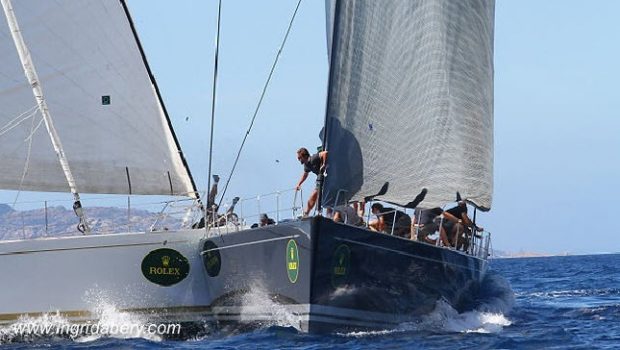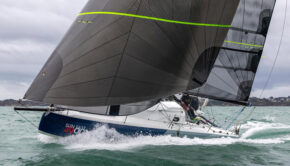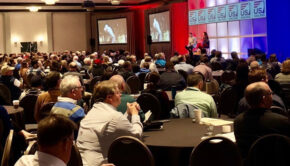Learning the Racing Rules of Sailing
Published on November 9th, 2022
Dave Perry’s 100 Best Racing Rules Quizzes highlights specific aspects of the racing rules … take the test:
Question:
Two 25-foot boats, L (a leeward boat) and W (a windward boat), are approaching the right-hand end of the starting line, a 30-foot powerboat, to start an upwind leg. Both boats are beam reaching, with L on a course to pass one length to leeward of the race committee boat.
Twenty seconds before the starting signal and when two lengths from the race committee boat, L hails, “No room! Don’t go in there!” to W. Both boats hold their courses until W is overlapped to leeward of the race committee boat. At that point L luffs and W makes contact nearly simultaneously with both L and the committee boat.
There is damage to the starboard side of L but not serious damage. Both boats protest each other. You are on the protest committee; how would you decide this?
Answer:
Boat L is penalized under rules 14, Avoiding Contact, and 16.1, Changing Course. The preamble to Part 2, Section C, At Marks and Obstructions, states that rules 18, Mark-Room, 19, Room to Pass an Obstruction and 20, Room to Tack at an Obstruction, do not apply “at a starting mark surrounded by navigable water or at its anchor line from the time the boats are approaching them to start…”.
Therefore the situation is governed by the rules in Sections A and B. At the time W becomes overlapped to leeward of the race committee boat, she is keeping clear of L in compliance with rule 11, On the Same Tack, Overlapped (Section A rule). Rule 16.1 requires L, as a right-of-way boat, to give W room to keep clear of her when she changes her course (Section B rule).
When L luffs, there is not room (space) for W to comply with the Part 2 rules and rule 31, Touching a Mark, due to the physical presence of the race committee boat (see the definition Room). Therefore L breaks rule 16.1. W breaks rules 11 and 31 but is exonerated (freed from penalty) by rule 43.1(b), Exoneration.
L also breaks rule 14 for failing to avoid a collision, and is penalized under that rule because the contact results in damage to herself. However, from the time L begins to luff, it is not possible for W to avoid contact; therefore W does not break rule 14.
Had L wanted to prevent W from passing between her and the committee boat, she should have luffed sooner while W was still able to respond to her luff without making contact with the committee boat (see World Sailing Cases 114 and 146).
For more quizzes, click here.









 We’ll keep your information safe.
We’ll keep your information safe.